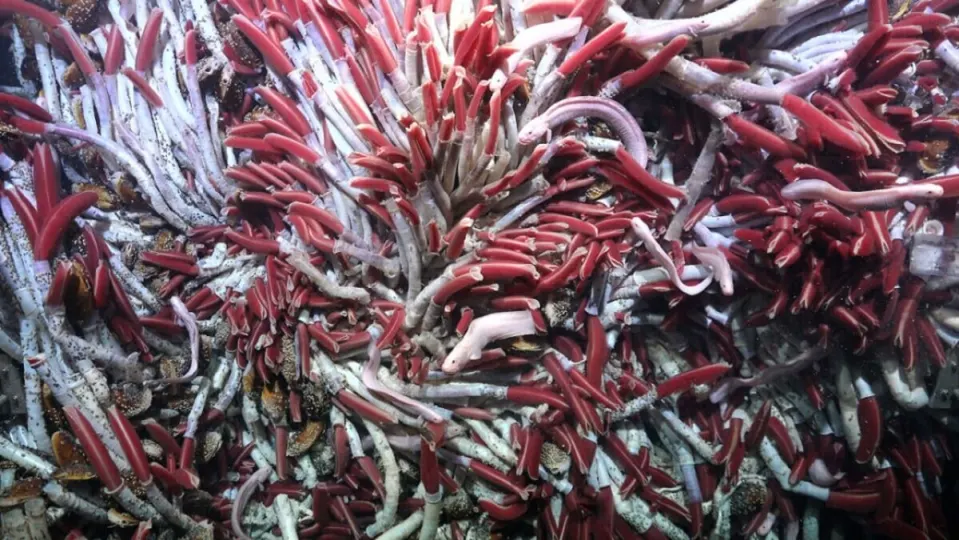When we thought we had discovered everything related to life on our planet, science once again shows us that there is still a long way to go.
Recently, a group of researchers aboard a vessel from the Schmidt Ocean Institute used an underwater robot to flip over volcanic crust plates in the depths of the Pacific Ocean.
The international team of researchers discovered subsurface fluid veins beneath the seabed of this well-studied site, revealing an entirely new world that was previously unknown.
“On land, we’ve long known about animals living in underground cavities, and in the ocean, animals living in sand and mud, but for the first time, scientists have sought out animals beneath hydrothermal vents,” says Jyotika Virmani, the executive director of the institute, in a publication.
“This truly extraordinary discovery of a new ecosystem, hidden beneath another ecosystem, provides further evidence that life exists in incredible places.”
After removing the seafloor crust, a colorful ecosystem of worms, snails, and chemosynthetic bacteria that rely on minerals rather than sunlight for energy has been revealed.

“With this discovery, our understanding of animal life in deep-sea hydrothermal vents has been greatly expanded,” states Monika Bright, an ecologist from the University of Vienna, in the publication.
“There are two dynamic habitats at the vents. The animals above and below the surface vents thrive in unison, depending on the vent fluid from below and oxygen from seawater above.”
The researchers found tube-dwelling worms particularly fascinating, deep-sea creatures that appear to travel through volcanic fluids beneath the seafloor to colonize new habitats. This might explain why so few juveniles are seen congregating around deep volcanic fissures, as most could be maturing beneath the surface.

To test this hypothesis, researchers used a remotely operated vehicle, named SuBastian, to extract a square piece of ocean floor on the East Pacific Rise, located off Central America at a depth of about 2500 meters. The team then placed a mesh box over this lifeless spot.
When they retrieved the box a few days later, researchers discovered that a new group of animals had colonized the area. Scientists speculate that these creatures arrived from beneath the numerous cracks and fissures in the seafloor.
“The discoveries made on each Schmidt Ocean Institute expedition underscore the urgency of exploring our ocean depths thoroughly, so that we may understand what exists within the marine depths,” says Wendy Schmidt, President, and Co-Founder of the Schmidt Ocean Institute.
“The discovery of new creatures, landscapes, and now an entirely new ecosystem highlights how much we have yet to uncover about our ocean, and how crucial it is to protect what we still do not know or understand.”
Some of the links added in the article are part of affiliate campaigns and may represent benefits for Softonic.


